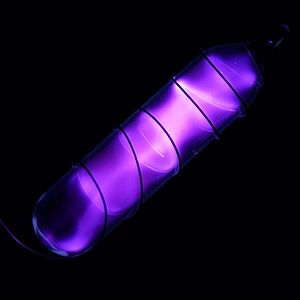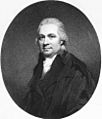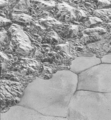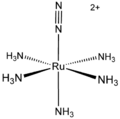Nitrogen facts for kids
 |
||||||||||||||||||||||||
| Nitrogen | ||||||||||||||||||||||||
|---|---|---|---|---|---|---|---|---|---|---|---|---|---|---|---|---|---|---|---|---|---|---|---|---|
| Allotropes | see Allotropes of nitrogen | |||||||||||||||||||||||
| Appearance | a gas, liquid or solid without color | |||||||||||||||||||||||
| Standard atomic weight Ar, std(N) | [14.00643, 14.00728] conventional: 14.007 | |||||||||||||||||||||||
| Nitrogen in the periodic table | ||||||||||||||||||||||||
|
||||||||||||||||||||||||
| Atomic number (Z) | 7 | |||||||||||||||||||||||
| Group | group 15 (pnictogens) | |||||||||||||||||||||||
| Period | period 2 | |||||||||||||||||||||||
| Block | p | |||||||||||||||||||||||
| Electron configuration | [He] 2s2 2p3 | |||||||||||||||||||||||
| Electrons per shell | 2, 5 | |||||||||||||||||||||||
| Physical properties | ||||||||||||||||||||||||
| Phase at STP | gas | |||||||||||||||||||||||
| Melting point | 63.15 K (-210.00 °C, -346.00 °F) | |||||||||||||||||||||||
| Boiling point | 77.36 K (-195.79 °C, -320.33 °F) | |||||||||||||||||||||||
| Density (at STP) | 1.251 g/L | |||||||||||||||||||||||
| when liquid (at b.p.) | 0.808 g/cm3 | |||||||||||||||||||||||
| Triple point | 63.1526 K, 12.53 kPa | |||||||||||||||||||||||
| Critical point | 126.19 K, 3.3978 MPa | |||||||||||||||||||||||
| Heat of fusion | (N2) 0.72 kJ/mol | |||||||||||||||||||||||
| Heat of vaporization | (N2) 5.56 kJ/mol | |||||||||||||||||||||||
| Molar heat capacity | (N2) 29.124 J/(mol·K) |
|||||||||||||||||||||||
Vapor pressure
|
||||||||||||||||||||||||
| Atomic properties | ||||||||||||||||||||||||
| Oxidation states | −3, −2, −1, +1, +2, +3, +4, +5 (a strongly acidic oxide) | |||||||||||||||||||||||
| Electronegativity | Pauling scale: 3.04 | |||||||||||||||||||||||
| Ionization energies |
|
|||||||||||||||||||||||
| Covalent radius | 71±1 pm | |||||||||||||||||||||||
| Van der Waals radius | 155 pm | |||||||||||||||||||||||
| Spectral lines of nitrogen | ||||||||||||||||||||||||
| Other properties | ||||||||||||||||||||||||
| Natural occurrence | primordial | |||||||||||||||||||||||
| Crystal structure | hexagonal | |||||||||||||||||||||||
| Speed of sound | (gas, 27 °C) 353 m/s | |||||||||||||||||||||||
| Thermal conductivity | 25.83 × 10−3 W/(m⋅K) | |||||||||||||||||||||||
| Magnetic ordering | diamagnetic | |||||||||||||||||||||||
| CAS Number | 7727-37-9 | |||||||||||||||||||||||
| History | ||||||||||||||||||||||||
| Discovery | Daniel Rutherford (1772) | |||||||||||||||||||||||
| Named by | Jean-Antoine Chaptal (1790) | |||||||||||||||||||||||
| Main isotopes of nitrogen | ||||||||||||||||||||||||
|
||||||||||||||||||||||||
Nitrogen is a nonmetal chemical element. It has the chemical symbol N and atomic number 7. More than 78 percent of the air we breathe is made of nitrogen.
A typical nitrogen atom has 7 protons and 7 neutrons. It also has 5 electrons in its outer shell.
Contents
What is Nitrogen Like?
Nitrogen is a gas that has no color or smell at normal temperatures. It usually joins with another nitrogen atom to form a nitrogen molecule (N2). The bond between these two atoms is very strong.
This strong bond is why nitrogen is found in many explosives. When an explosive is made, this bond is broken. When it explodes, the bond forms again, releasing a lot of energy.
Nitrogen turns into a liquid at -195.8°C. It becomes a solid at -210°C. If you squeeze nitrogen gas very hard, it can turn into a liquid without getting cold.
Because of its strong bond, nitrogen usually does not easily combine with other atoms. Lithium is one of the few elements that reacts with nitrogen without needing heat. Magnesium can also burn in nitrogen.
Nitrogen can make blue electric sparks. This blue color happens when nitrogen atoms get "excited." When they return to normal, they release light. Excited nitrogen can react with many things it normally wouldn't.
Nitrogen Compounds
Many important chemical compounds used in industry contain nitrogen. These include ammonia, nitric acid, nitrates, and cyanides. Nitrogen can exist in different forms, called oxidation states. Each form has its own set of compounds.
- Ammonia and Proteins: Compounds like ammonia and ammonium are weak reducing agents. Amino acids and proteins, which are vital for life, also contain nitrogen in this form.
- Hydrazine: Hydrazine is a strong reducing agent.
- Azides: Azides are very powerful reducing agents. Most of them are also very toxic.
- Nitrous Oxide: Nitrous oxide is used as an anesthetic, which helps people sleep during medical procedures.
- Nitrites: Nitrites are common compounds.
- Nitrates and Explosives: Compounds with nitrogen in a different form are strong oxidizing agents. This group includes nitric acid and nitrates. Nitrates are used in explosives like dynamite, nitroglycerin, and trinitrotoluene.
Where is Nitrogen Found and How is it Made?
Air is mostly nitrogen, making up about 78% of it. The rest is about 20.95% oxygen, a small amount of argon, and tiny bits of other gases like carbon dioxide and water vapor. Nitrogen is also found in some nitrates in the ground. You can also find nitrogen in proteins, which are in all living things.
To make pure liquid nitrogen, air is cooled down. Nitrogen turns into a liquid at a different temperature than oxygen, allowing them to be separated. It can also be made by heating certain chemical compounds, such as sodium azide.
Uses of Nitrogen
Nitrogen is used to stop things from reacting with oxygen in the air. For example, it fills crisp bags to keep snacks fresh. It's also used in some light bulbs and tires. Nitrogen helps make electronic parts like transistors. Liquid nitrogen is very cold and can be used to freeze things quickly.
Nitrogen compounds have many uses too:
- Anesthetics (like nitrous oxide) help with pain.
- Explosives (like dynamite) are used in construction and mining.
- Ammonia is used in cleaners.
- Proteins, which contain nitrogen, are a key part of our food.
- Nitrogen compounds are even used in some fuels for planes.
History of Nitrogen
Nitrogen was discovered by Daniel Rutherford in 1772. He called it "noxious gas" or "fixed gas." Scientists noticed that this part of the air did not burn and that animals could not live in it. For a while, it was known as "azote." Many nitrogen compounds still use parts of this old name, like "azide" or "azine" (for example, hydrazine).
In 1910, Lord Rayleigh found that if an electric spark was passed through nitrogen, it created a very reactive form of nitrogen. This special nitrogen could then react with many metals and other compounds.
Safety with Nitrogen
Nitrogen itself is not poisonous. We breathe it safely every day as part of the air. However, we cannot breathe pure nitrogen by itself. This is because pure nitrogen does not have the oxygen our bodies need to live. If someone breathes pure nitrogen, they will simply pass out due to lack of oxygen.
Related pages
| Periodic table | |||||||||||||||||||||||||||||||||||||||||
|---|---|---|---|---|---|---|---|---|---|---|---|---|---|---|---|---|---|---|---|---|---|---|---|---|---|---|---|---|---|---|---|---|---|---|---|---|---|---|---|---|---|
| H | He | ||||||||||||||||||||||||||||||||||||||||
| Li | Be | B | C | N | O | F | Ne | ||||||||||||||||||||||||||||||||||
| Na | Mg | Al | Si | P | S | Cl | Ar | ||||||||||||||||||||||||||||||||||
| K | Ca | Sc | Ti | V | Cr | Mn | Fe | Co | Ni | Cu | Zn | Ga | Ge | As | Se | Br | Kr | ||||||||||||||||||||||||
| Rb | Sr | Y | Zr | Nb | Mo | Tc | Ru | Rh | Pd | Ag | Cd | In | Sn | Sb | Te | I | Xe | ||||||||||||||||||||||||
| Cs | Ba | La | Ce | Pr | Nd | Pm | Sm | Eu | Gd | Tb | Dy | Ho | Er | Tm | Yb | Lu | Hf | Ta | W | Re | Os | Ir | Pt | Au | Hg | Tl | Pb | Bi | Po | At | Rn | ||||||||||
| Fr | Ra | Ac | Th | Pa | U | Np | Pu | Am | Cm | Bk | Cf | Es | Fm | Md | No | Lr | Rf | Db | Sg | Bh | Hs | Mt | Ds | Rg | Cn | Uut | Fl | Uup | Lv | Uus | Uuo | ||||||||||
|
|||||||||||||||||||||||||||||||||||||||||
Images for kids
-
Daniel Rutherford, who discovered nitrogen
-
Table of nuclides (Segrè chart) from carbon to fluorine (including nitrogen). Orange indicates proton emission (nuclides outside the proton drip line); pink for positron emission (inverse beta decay); black for stable nuclides; blue for electron emission (beta decay); and violet for neutron emission (nuclides outside the neutron drip line). Proton number increases going up the vertical axis and neutron number going to the right on the horizontal axis.
-
Solid nitrogen on the plains of Sputnik Planitia (on the bottom-right side of the image) on Pluto next to water ice mountains (on the up-left side of the image)
See also
 In Spanish: Nitrógeno para niños
In Spanish: Nitrógeno para niños













